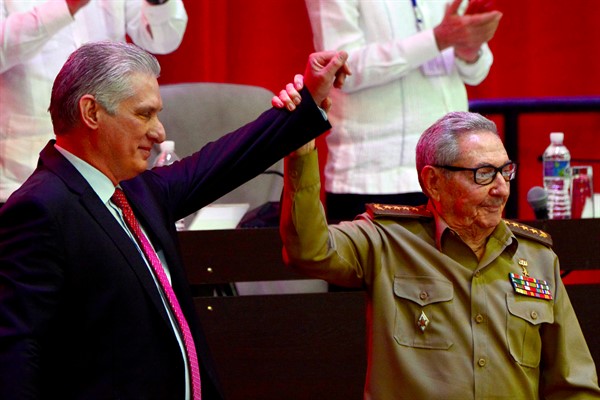On Monday, the 60th anniversary of the failed Bay of Pigs invasion, Raul Castro stepped down as leader of the Cuban Communist Party. Between them, Raul and his late brother, Fidel, led Cuba since the triumph of the revolution in January 1959.
But Raul Castro’s resignation more than six decades later, at the party’s Eighth Congress, represents more than just the retirement of an aging revolutionary with a storied last name. His departure marks the final stage of a leadership transition from the “historic” generation that founded the revolutionary regime to a successor generation born after 1959. All five of the remaining veteran leaders who had governed the country for decades joined Castro in retiring from the Political Bureau and Central Committee of the Communist Party, making way for younger colleagues.
Miguel Diaz-Canel, who took Castro’s place as president in 2018, now assumes the mantle of party leader as well. He has been a firm supporter of Castro’s policies, first and foremost the economic reform program launched in 2011 that aims to replace Soviet-style central planning with a hybrid market-socialist model. Diaz-Canel’s favorite hashtag on his social media accounts is “We Are Continuity,” and the just-concluded party congress was billed as the “Continuity Congress.” The aim, no doubt, is to reassure the public that the succession is proceeding smoothly, and to enable Cuba’s new leaders to share the aura of legitimacy that still attaches to the regime’s founders.

